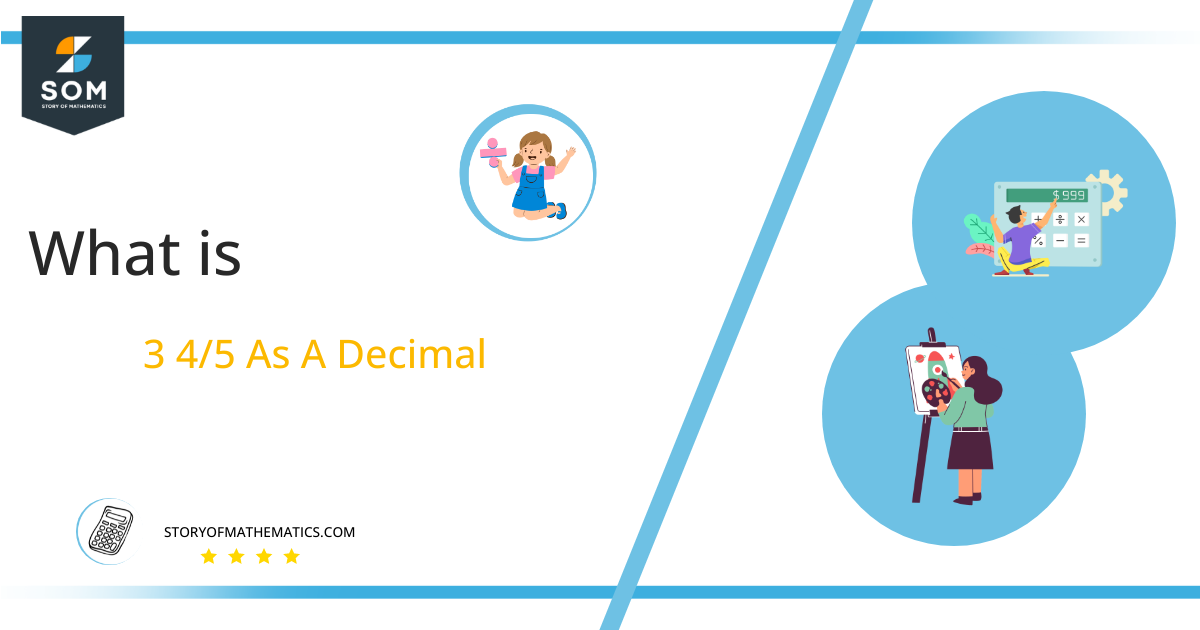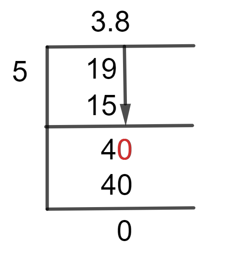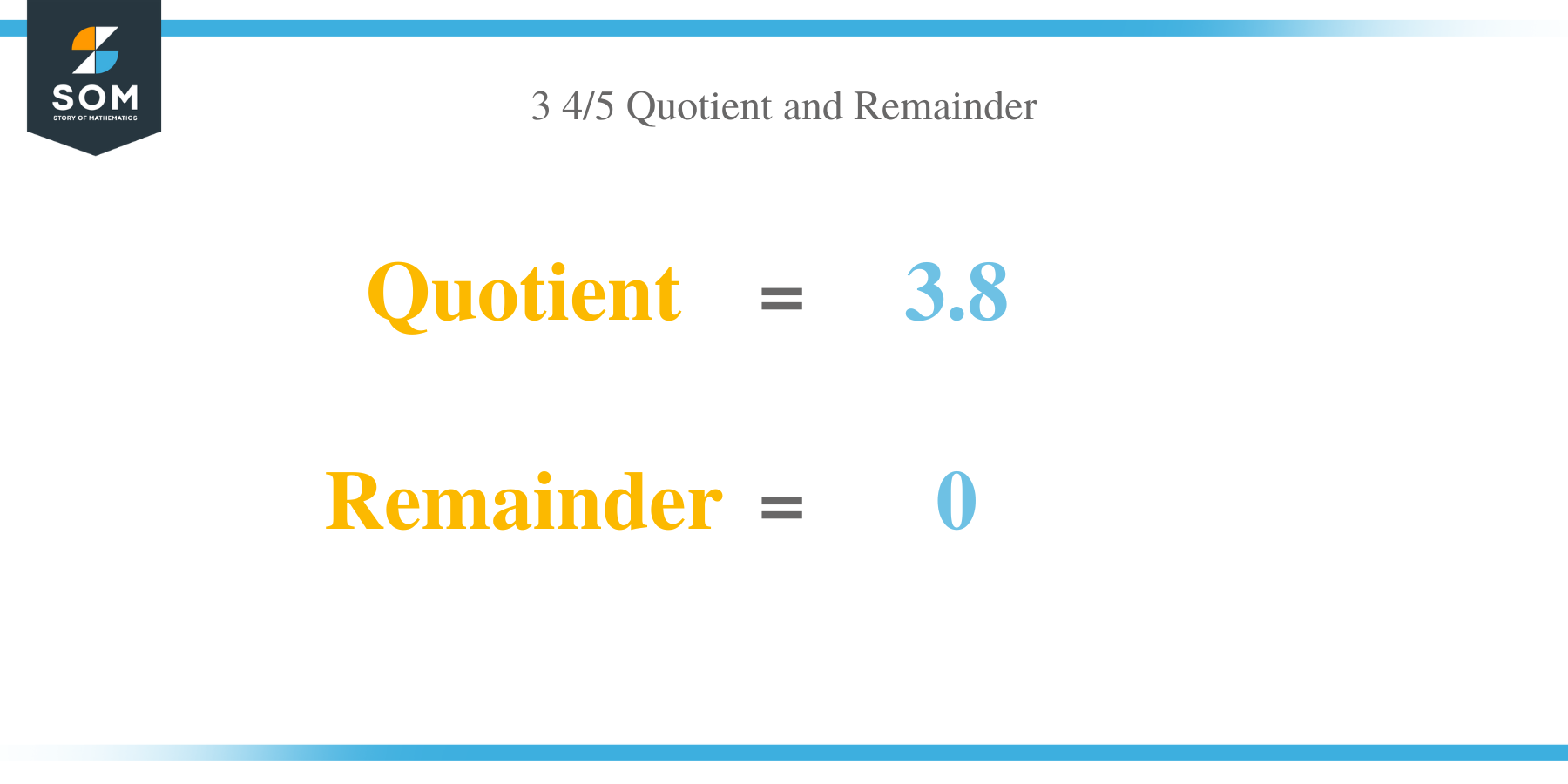What Is 3 4/5 as a Decimal + Solution With Free Steps

The fraction 3 4/5 as a decimal is equal to 3.8.
In general, fractions are written in p/q form, where p and q stand for the fraction’s numerator and denominator, respectively. Proper fractions, improper fractions, and mixed fractions are the three categories under which fractions fall. The proper fraction is one in which the numerator is smaller than the denominator. Similar to this, an improper fraction has a larger numerator. Mixed fractions are those that combine an improper fraction with a whole number.
The Long Division method can be used to convert the given mixed fraction, 3 4/5, to its decimal value. Since decimal values are simpler to comprehend and more helpful in solving mathematical difficulties, we transform fractions into decimals.
Solution
Let’s first multiply the denominator by the whole number and then add the numerator. The mixed fractions can be transformed into improper fractions. The denominator will remain the same when the numerator is provided. As a result, the fraction we now have is 19/5.
Two key concepts employed in the long division approach are the Dividend and the Divisor. The fraction’s numerator is referred to as a “dividend,” whereas the denominator is referred to as a “divisor.” Therefore, we have a dividend of 19 and a divisor of 5 for the given fraction.
Dividend = 19
Divisor = 5
The term “Quotient” is used to describe the result of a fraction in a decimal value.
Quotient = Dividend $ \div $ Divisor = 12 $ \div $ 5
The following is the long division method for the given fraction of 19/5:
Figure 1
19/5 Long Division Method
By using long division, the following fraction can be solved:
The percentage we had:
19 $ \div $ 5
While solving the fractions, the quotient we get can be greater or less than one. Here we have the numerator greater than the denominator. We can divide the two numbers immediately. It follows that we will have a quotient that will be greater than one.
The Remainder is the number that is left over after two numbers that aren’t entirely divisible by one another are divided.
19 $ \div $ 5 $ \approx $ 3
Where:
5 x 3 = 15
After this action, we are left with a remainder of 4. We can no longer divide these two numbers because we have a remainder that is less than the divisor. To account for this, we shall add a decimal point to the quotient. We can now multiply our remaining number by ten. We now have the remainder of 40 after doing this.
40 $ \div $ 5 = 8
Where:
5 x 8 = 40
The Remainder we have now is 40 – 40 = 0.
By applying the Long Division method, the given mixed fraction of 3 4/5 has a resultant Quotient of 3.8 and a Remainder of 0.
Images/mathematical drawings are created with GeoGebra.
